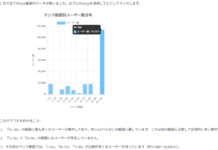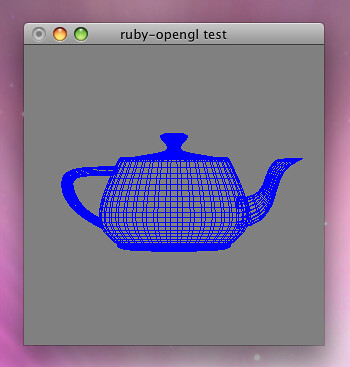この記事はアピリッツの技術ブログ「DoRuby」から移行した記事です。情報が古い可能性がありますのでご注意ください。
こんにちは、KBMJの中平@railsエンジニアです。
今回はruby on railsでグラフを表示させようと思います。
rubyでグラフを作成するのは、Gruff というプラグインがありますが
今回は Gruffではなく Open Flash Chart というグラフ作成プラグインを使用してみます。
このプラグインの特徴は、その名の通りグラフをFlashで表示するプラグインなので、Gruffを使った場合より見た目がいいグラフができるかも? ということで、さっそくruby on rails でグラフを作成してみます。
Open Flash Chartは、こちらのサイトでruby on rails 用のプラグインが公開されています。(ほかの言語のプラグインもあります)
http://pullmonkey.com/projects/open_flash_chart2/
サイトを見ると使い方の手順が書いてあるのでその通りに実行します。
※上記のサイトに手順書いてありますので、ここでは要点をざっと説明します。
1.Open Flash Chartプラグインのインストール
ruby script/plugin install git://github.com/pullmonkey/open_flash_chart.git
2.グラフ表示のためのコントローラーやビューの記述
サイトに書いてあるサンプルを参考にしてください。棒グラフの作成サンプルです。
(グラフのサンプルコードは数行の簡単なものですので、ここでは省略します)
3.swfobject.jsファイルのコピー
プラグインに入っている
/vendor/plugins/open_flash_chart/assets/swfobject.js ファイルを
RAILS_ROOT/public/javascriptsディレクトリにコピーします。
4.open-flash-chart.swfファイルのコピー
プラグインに入っている
/vendor/plugins/open_flash_chart/assets/open-flash-chart.swf ファイルを
RAILS_ROOT/publicディレクトリにコピーします。
準備はこれで終わりです。
これでrailsを起動しページ表示するとグラフが表示されます。
コントローラー側で、値やグラフの種類を変えることができますので、動的なグラフ表示を簡単に導入できます。
また、このプラグインで、棒グラフ、円グラフ、折れ線グラフなど数種類のグラフが作れるようですし、
日本語でラベルの表示などもできます。
http://pullmonkey.com/projects/open_flash_chart2/
に作成できるグラフの種類と、rails のサンプルコードも一緒にありますので、参考にしてください。
また、http://pullmonkey.com/ を見たところ、ajaxでグラフの種類を切り替えたりするサンプルもあったので、まだ色々な使い方ができそうです。
ruby on railsでグラフ作成するのはOpen Flash Chartの使い方も簡単ですので、参考にしていただければと思います。
※個人的には、GruffよりOpen Flash Chartを使ってのグラフのほうが見た目が好きです。













































